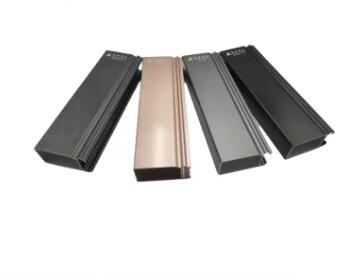The Crucial Role of Hardness in Structural Material Selection
2024-03-16
When it comes to designing and constructing buildings, bridges, machinery, and other structures, the selection of materials is a critical decision that directly impacts performance, durability, and safety. Among the multitude of factors to consider, hardness stands out as a fundamental property that significantly influences the suitability of structural materials for various applications. Let's explore the role of hardness in the selection of structural materials and its implications for engineering and construction.
Understanding Hardness:
1. Definition:
Hardness refers to the resistance of a material to deformation, indentation, scratching, or penetration when subjected to external forces or loads. It is a measure of the material's ability to withstand wear, abrasion, and impact without permanent deformation or damage.
2. Measurement:
Hardness is quantified using various testing methods, including Brinell, Rockwell, Vickers, and Mohs scales, each tailored to specific materials and applications. These tests assess the material's resistance to indentation or surface penetration by a standardized indenter or abrasive.
The Importance of Hardness in Structural Materials:
1. Strength and Stiffness:
Hardness is closely related to the strength and stiffness of structural materials. Materials with high hardness typically exhibit greater strength and stiffness, making them suitable for load-bearing applications where resistance to deformation and deflection is critical.
2. Wear Resistance:
Hardness plays a crucial role in determining a material's resistance to wear, abrasion, and erosion caused by friction, impact, or contact with abrasive particles. In applications subjected to abrasive forces or sliding contact, materials with high hardness are preferred to ensure long-term durability and performance.
3. Fatigue Resistance:
Hardness influences a material's resistance to fatigue failure, which occurs when repeated cyclic loading leads to crack initiation and propagation. Materials with higher hardness generally exhibit improved fatigue resistance, reducing the risk of premature structural failure under cyclic loading conditions.
Selection Considerations:
1. Application Requirements:
The selection of structural materials must consider the specific requirements and conditions of the application, including mechanical loads, environmental factors, temperature variations, and exposure to corrosive agents or abrasive substances.
2. Material Compatibility:
Hardness should be evaluated in conjunction with other material properties, such as ductility, toughness, corrosion resistance, and thermal conductivity, to ensure compatibility with the intended application and performance objectives.
3. Cost Considerations:
While materials with high hardness may offer superior performance in certain applications, they may also be more expensive to manufacture, process, or procure. Cost-benefit analysis is essential to balance performance requirements with budgetary constraints.
Examples of Structural Materials and Their Hardness:
1. Metals:
Steel alloys, aluminum alloys, and titanium alloys are commonly used in structural applications due to their excellent strength-to-weight ratios, stiffness, and hardness properties.
2. Ceramics:
Ceramics such as porcelain, ceramic tiles, and refractory materials exhibit high hardness, making them suitable for applications requiring wear resistance, thermal insulation, and corrosion resistance.
3. Polymers:
Engineering polymers such as nylon, polyethylene, and polycarbonate offer a balance of hardness, toughness, and flexibility, making them suitable for a wide range of structural and functional applications.
Conclusion:
In conclusion, hardness plays a pivotal role in the selection of structural materials, influencing strength, wear resistance, fatigue performance, and overall durability. Engineers, architects, and designers must carefully evaluate the hardness characteristics of materials relative to application requirements to ensure optimal performance, longevity, and safety of structures. By understanding the role of hardness and its implications for material selection, stakeholders can make informed decisions and leverage the diverse array of structural materials available to meet the evolving demands of modern construction and engineering projects.



